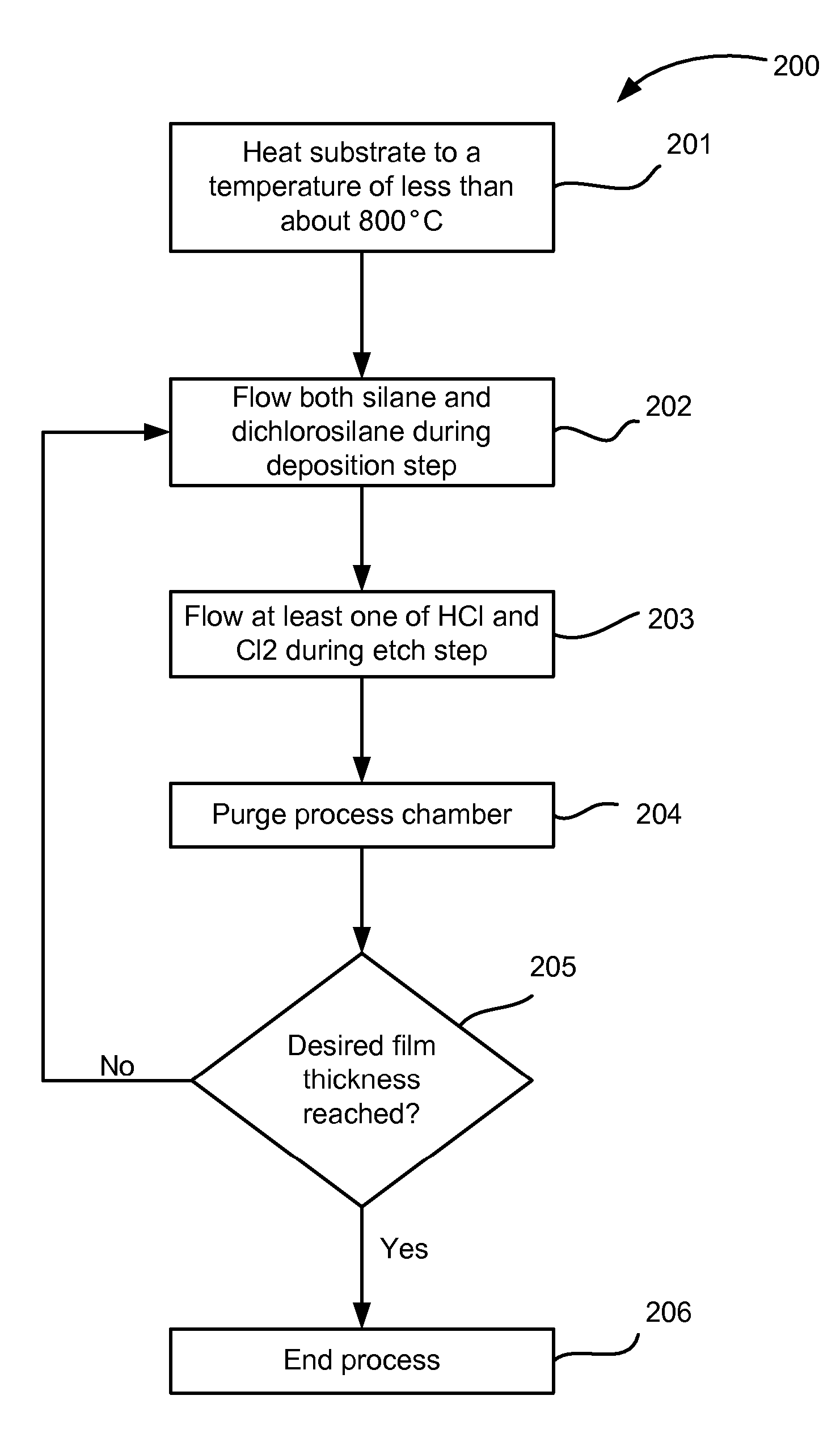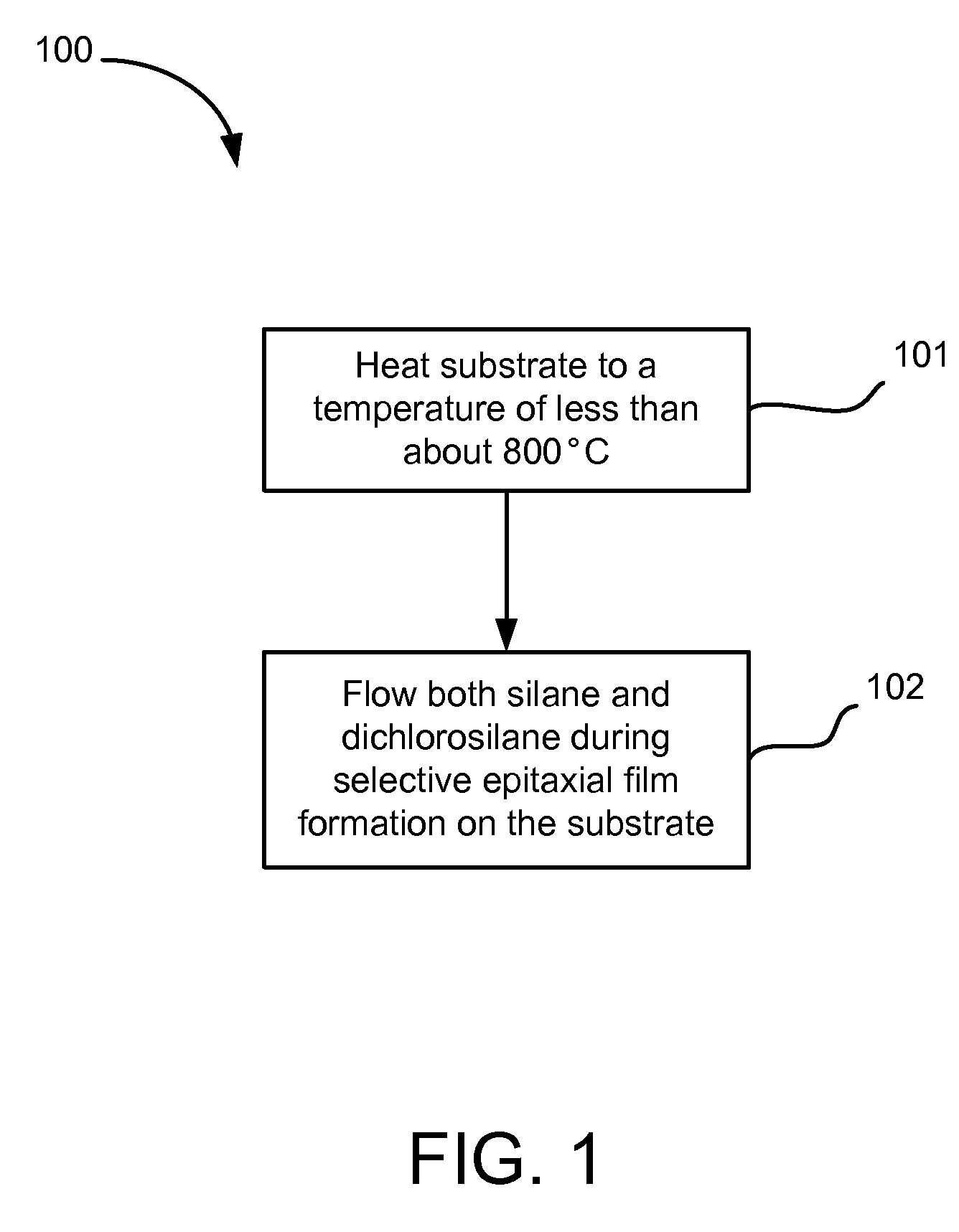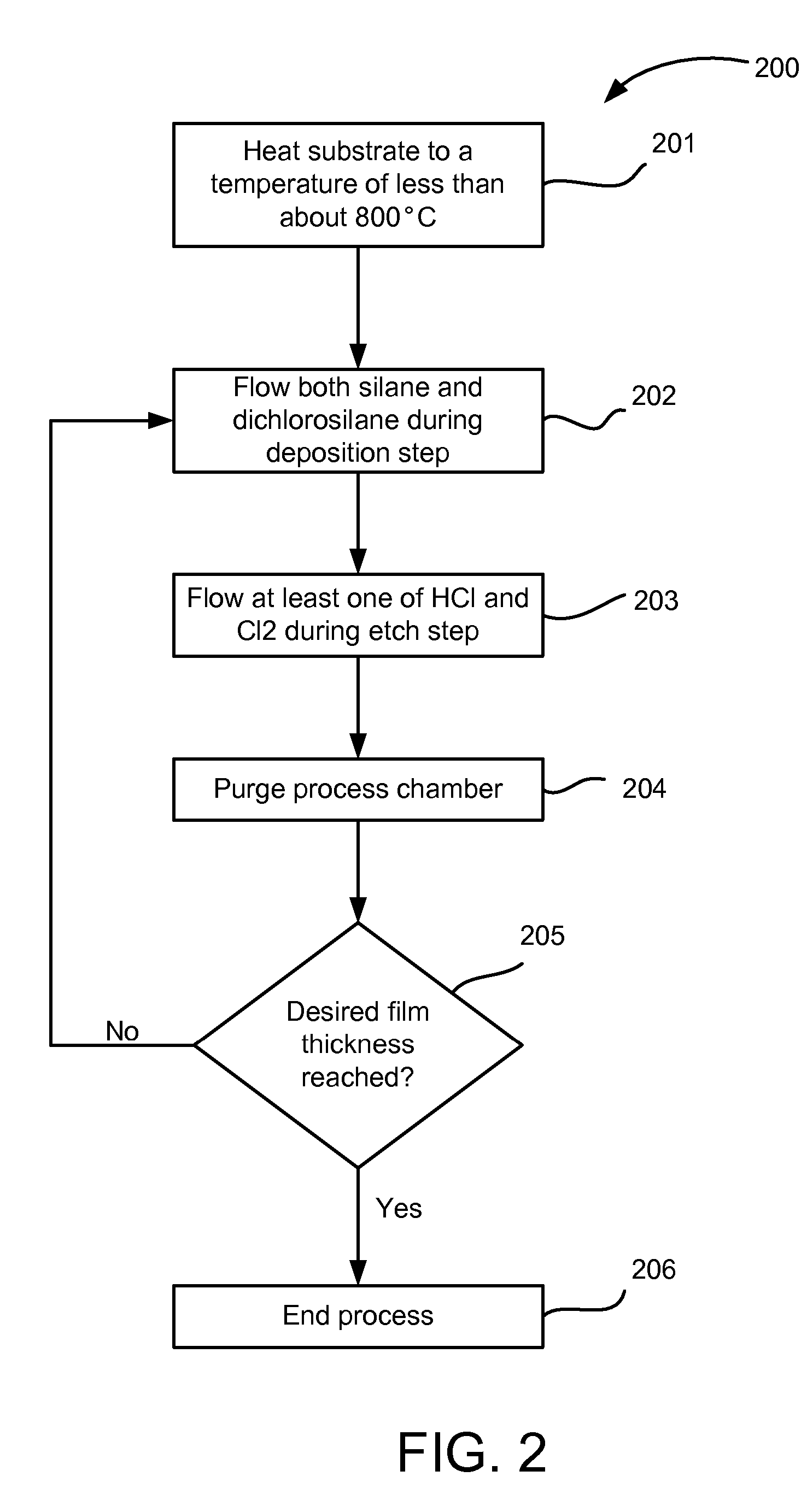Methods of controlling morphology during epitaxial layer formation
a technology of epitaxial layer and morphology, which is applied in the direction of polycrystalline material growth, crystal growth process, chemically reactive gas, etc., can solve the problems of limited, or no, deposition of epitaxy material, and difficult production of ultra shallow source/drain junction. achieve the effect of smooth surface morphology and fast deposition ra
- Summary
- Abstract
- Description
- Claims
- Application Information
AI Technical Summary
Benefits of technology
Problems solved by technology
Method used
Image
Examples
Embodiment Construction
[0017] During a selective epitaxial growth process on a silicon substrate patterned with dielectric films, formation of single-crystal semiconductor occurs only on the exposed silicon surfaces (e.g., not on the dielectric surfaces). Selective thickness is defined as the maximum film thickness obtained on the silicon surfaces prior to the onset of film growth or nucleation on the dielectric surfaces.
[0018] Selective epitaxial growth processes may include simultaneous etch-deposition processes as well as alternating gas supply processes. In a simultaneous etch-deposition process, both etchant species and deposition species are flowed simultaneously. As such, an epitaxial layer is simultaneously deposited and etched during its formation.
[0019] U.S. patent application Ser. No. 11 / 001,774, filed Dec. 1, 2004 (Docket No. 9618), describes an alternating gas supply (AGS) process for forming epitaxial layers on a substrate. During an AGS process, an epitaxial deposition process is conducte...
PUM
| Property | Measurement | Unit |
|---|---|---|
| temperature | aaaaa | aaaaa |
| temperature | aaaaa | aaaaa |
| temperature | aaaaa | aaaaa |
Abstract
Description
Claims
Application Information
 Login to View More
Login to View More - R&D
- Intellectual Property
- Life Sciences
- Materials
- Tech Scout
- Unparalleled Data Quality
- Higher Quality Content
- 60% Fewer Hallucinations
Browse by: Latest US Patents, China's latest patents, Technical Efficacy Thesaurus, Application Domain, Technology Topic, Popular Technical Reports.
© 2025 PatSnap. All rights reserved.Legal|Privacy policy|Modern Slavery Act Transparency Statement|Sitemap|About US| Contact US: help@patsnap.com



